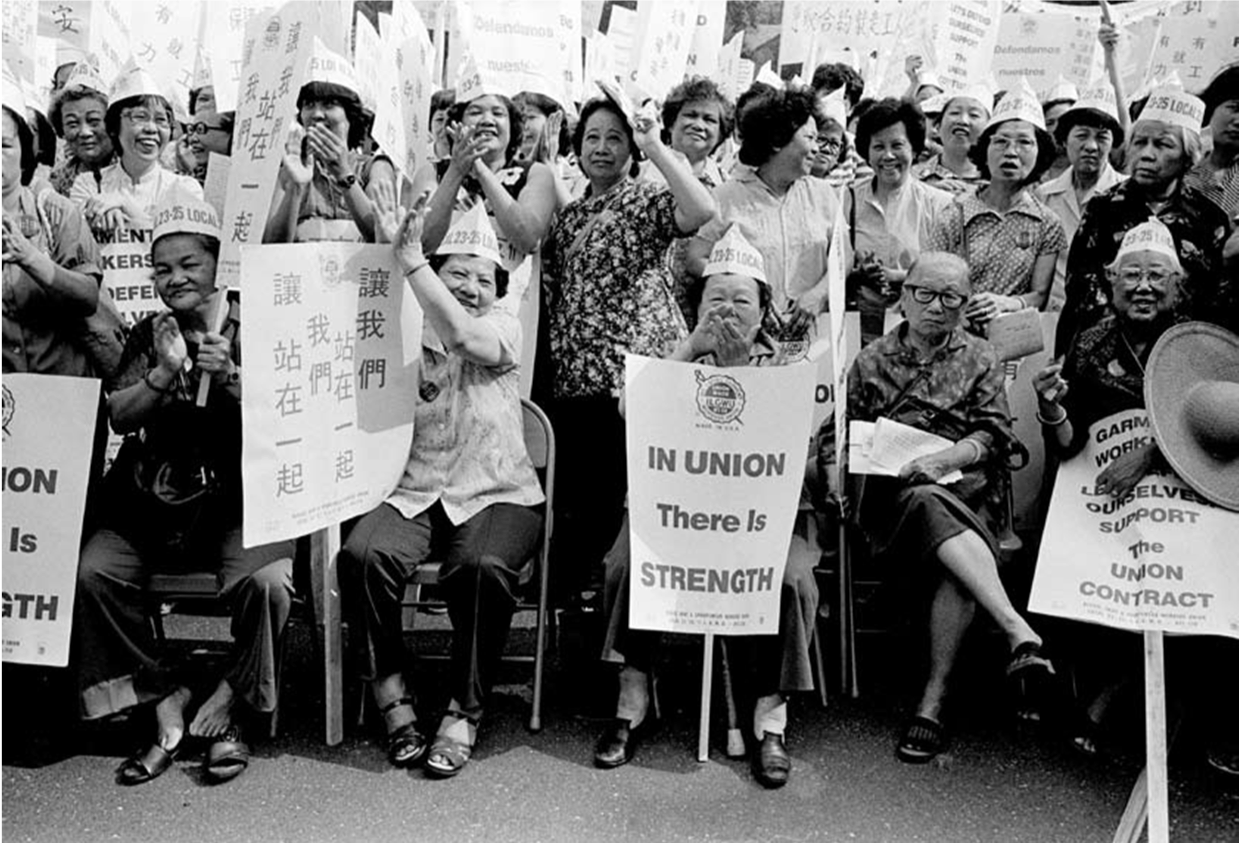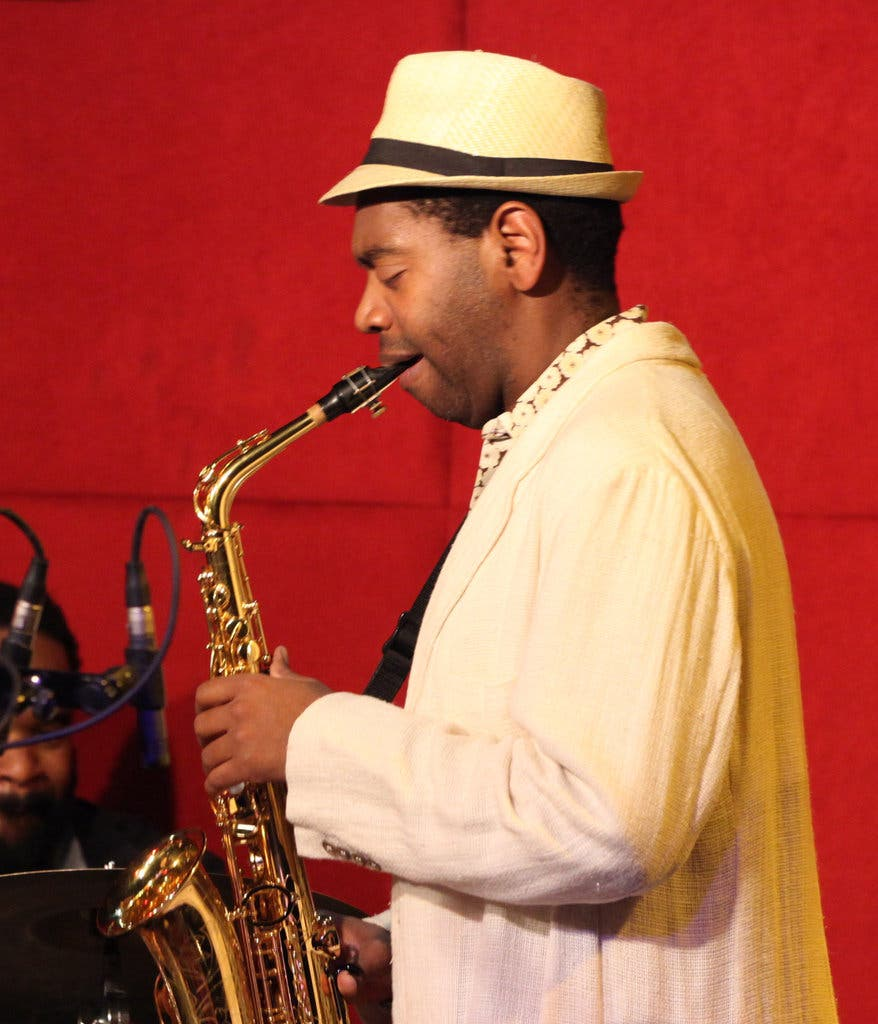Asian American women’s history is a vital yet often overlooked segment of the broader narrative of American history. The Schlesinger Library’s latest exhibit shines a light on this underrepresented past, featuring compelling artifacts and stories from Asian American women across generations. With materials that span over 150 years, the exhibition confronts visitors with the narratives of Ainu and Visayan women, whose names and stories have been primarily silenced or marginalized throughout history. This exploration is not just about historical documentation; it’s an invitation to rethink the contributions of Asian American women in shaping the cultural foundation of the United States, also reflecting the importance of women’s history in archives. As the Asian American women exhibit unfolds, it highlights the dynamic and multifaceted experiences of these communities, urging us to reconsider the rich tapestry of Asian American stories woven into the nation’s fabric.
The history of Asian American women is a crucial narrative that encompasses the experiences and contributions of countless individuals who have shaped American society. By examining the lives of these women, including the often unseen Ainu and Visayan communities, we uncover a wealth of insights into the societal dynamics that have defined women’s roles throughout U.S. history. Exhibitions like those at the Schlesinger Library not only preserve these important accounts but also engage with contemporary issues of representation and recognition. As we delve into Asian women’s pasts, we recognize their struggles, triumphs, and the impacts they have made, shedding light on the hidden narratives that enrich our collective history. From breaking barriers in social justice to influencing cultural landscapes, the stories woven by Asian American women deserve to be celebrated and remembered.
The Significance of Asian American Women’s History in Archives
Asian American women’s history has often been relegated to the shadows, overlooked in the larger narrative of American history. This is particularly evident in archival collections where their contributions, struggles, and stories have been underrepresented. The Schlesinger Library, known for its focus on women’s achievements, features an exhibit that highlights the stories of Ainu and Visayan women, among others, whose experiences are documented through rare artifacts. These artifacts not only preserve their legacies but also compel us to confront the societal dynamics that have long marginalized Asian American women’s stories.
For example, the exhibition ‘Illuminate’ showcases historical records, personal narratives, and visual representations that span over 150 years. Visitors are invited to rethink preconceived notions about the roles of Asian and Asian American women throughout history. This is crucial because understanding their contributions can reshape our comprehension of broader historical events, linking them to the larger themes of immigration, identity, and resilience. By spotlighting these stories in archives, we learn not only about the women represented but also about the cultural and societal frameworks that attempted to erase their narratives.
Artifacts Reflecting Asian American Women’s Diverse Cultures
The artifacts featured in the Schlesinger Library exhibit provide a window into the diverse experiences of Asian American women. Items such as photographs from the 1904 St. Louis World’s Fair, where Ainu and Visayan women were displayed, reveal the complex dynamics of representation and exploitation. These women were not only participants in a historical spectacle but also symbolized the intersections of culture and colonialism in the early 20th century. The archival photos collected by Jessie Tarbox Beals serve as a haunting reminder of how Asian American women’s narratives were often reduced to mere objects of curiosity.
In contrast to these historical exhibitions, contemporary collections encourage Asian American women to narrate their own stories. Organizations and archives now feature contributions from prominent figures like chefs Grace Zia Chu and Madhur Jaffrey, who help showcase the evolution of Asian American women’s voices in society. This duality in representation—historical objectification versus contemporary agency—is essential to understanding how narratives have shifted, and it underscores the importance of preserving diverse experiences within the archives.
Collaborative Efforts in Asian American Women’s Research
The Schlesinger exhibit not only presents historical artifacts but also embodies a collaborative educational effort aimed at uncovering the layers of Asian American women’s narratives. As students engage with archival materials, they explore themes of erasure, visibility, and representation within historical contexts. The course co-taught by Victor Betts and Erika Lee demonstrates an innovative approach to learning, prompting students to consider how historical archives reflect broader societal views and biases concerning Asian American women. Their critical research questions the complex fabric of American history, juxtaposing voices that have long been silenced.
This method of co-creation extends beyond the classroom and into the populace, urging individuals to recognize the importance of Asian American women in shaping cultural narratives. As students like Sophia Wang delve into cases such as Ah Fong’s legal battle, they reclaim and amplify stories that have been overlooked by mainstream historiography. Engaging with these narratives fosters a deeper understanding of the systemic issues that allow for the marginalization of specific demographics and highlights the value of inclusion in both educational spaces and historical documentation.
Towards a Comprehensive Understanding of American History
The exhibition ‘Illuminate’ serves as a critical reminder that Asian American history is an integral part of the broader American narrative. Victor Betts emphasizes this by addressing the need for a more inclusive approach to historical scholarship. The artifacts displayed challenge viewers to question why these stories have been historically marginalized and how incorporating them could enhance our collective understanding of U.S. history. Discussions around the Chinese Exclusion Act, Japanese American internment, and contemporary anti-Asian violence reflect the ongoing struggles and resilience of Asian American women against systemic oppression.
Betts’ vision for expanding the Schlesinger Library’s archival collections aligns with this goal. By actively pursuing more Asian American women’s stories and championing their representation, archivists contribute to a more nuanced and complete interpretation of American history. This effort not only helps elevate the marginalized voices of the past but also informs current and future generations about the critical roles played by Asian American women throughout history, reiterating that their contributions are not merely footnotes but are essential to the American story.
Rethinking Erasure in Historical Narratives
Erasure in historical narratives is a significant theme that the Schlesinger Library’s exhibit seeks to address. Through collaboration between students and archivists, there is a focused exploration of how women like those represented in the archives have been rendered invisible in the historical discourse. The absence of their stories prompts a reflection on the broader implications of erasure, particularly in understanding how demographic, racial, and gender biases can shape collective memory. It challenges educators and historians alike to question whose stories are preserved and whose are forgotten.
By engaging with these themes, the exhibit not only helps to recover lost narratives but also empowers a new generation to be proactive in preserving history. This is particularly important as societal movements aim to address injustices and promote equity. Highlighting cases like that of Ah Fong shows how women’s legal battles intersect with broader societal issues, emphasizing their agency and importance in advocating for change. By reframing these histories, new discussions can arise that further connect past injustices with present-day activism.
The Role of Art in Asian American Women’s History
Art plays a pivotal role in illuminating the often-overlooked stories of Asian American women. In the context of the Schlesinger Library exhibit, artist Shaina Lu’s commissioned artwork represents an innovative approach to contextualizing archival materials. Her translucent illustrations serve not only to beautify the exhibition space but also to symbolically filter sunlight onto the histories represented, breathing fresh perspectives into traditional narratives. This interplay between art and history allows for a more immersive experience, inviting viewers to interact with these stories on an emotional level.
The integration of artistic expression fosters a space for dialogue about the importance of representation in cultural narratives. Lu’s work highlights how artists can reinterpret historical accounts, as well as engage with themes of identity, memory, and community. By incorporating personal and collective elements of Asian American women’s experiences into the artistic realm, there is a significant opportunity to inspire future generations to reflect on their identities and histories. This synergy between art and history is fundamental in advocating for a richer understanding of the complexities of Asian American women’s roles and contributions to the broader societal landscape.
The Impact of Community Engagement on Asian American Histories
Community engagement is essential for integrating Asian American women’s histories into the fabric of local narratives. The Schlesinger Library’s efforts highlight the significance of collaboration among students, faculty, and community members to unearth and elevate these stories. As individuals from diverse backgrounds come together to participate in the preservation of history, it fosters a deeper understanding of shared cultural heritage and promotes healing from historical traumas. This grassroots approach encourages an inclusive culture that acknowledges past injustices and advocates for reparative histories.
Moreover, community-driven initiatives provide platforms for Asian American women to reclaim their narratives and to share their experiences in their own voices. This can take various forms, from oral histories to artistic expressions, all of which enrich the collective memory. Such engagement not only raises awareness about the unique challenges faced by Asian American women but also builds solidarity within and outside the community. Through these collaborative efforts, there is potential for transformative change, as stories that were once silenced gain newfound recognition and respect within the larger historical discourse.
Preserving the Legacy of Asian American Women in Archives
The preservation of Asian American women’s legacies is crucial for shaping a more inclusive historical record. The Schlesinger Library’s commitment to expanding its collections speaks to the need for meticulous curation of stories that have been traditionally marginalized. By prioritizing the acquisition of materials that reflect the unique experiences of Asian American women, archivists are actively participating in a broader movement to ensure that these narratives are not only protected but also made accessible for future generations. The continued effort to collect and maintain such archives is vital in paving the way for a more comprehensive understanding of American history.
Additionally, the role of community partnerships cannot be understated in this context. Working alongside local historians, educators, and cultural organizations creates a more dynamic approach to archiving and preserving stories. Collaborations can lead to outreach programs that engage different segments of the community, further emphasizing the importance of Asian American women’s histories. By demonstrating the rich, multifaceted contributions of these women, archivists and historians are not only preserving legacies but are also fostering pride and identity within these communities, significantly enriching the cultural tapestry of America.
Examining the Intersection of Gender and Race in Historical Narratives
The intersection of gender and race is a critical aspect of understanding Asian American women’s histories. The Schlesinger Library’s exhibit does not shy away from exploring how these interrelated identities have informed the experiences of women throughout American history. By scrutinizing the impact of legislative measures like the Chinese Exclusion Act on Asian American women, the exhibit highlights the compounded challenges they faced, not only as immigrants but also as women navigating a patriarchal society. This multidimensional approach invites audiences to consider how historical narratives are shaped by the intersections of race, gender, class, and cultural identity.
As discussions about equity and representation grow louder in contemporary society, historical examination offers valuable insights into the roots of these issues. Engaging with the stories of Asian American women helps elucidate the systemic barriers they encountered and continue to face. It sheds light on the enduring impacts of colonialism and racism while creating a platform for dialogue about resilience and activism. This examination fosters a deeper appreciation for the struggles and triumphs of those who navigate these intersections, ensuring that their contributions are neither forgotten nor overlooked in the historical canon.
Frequently Asked Questions
What is the purpose of the ‘Illuminate: Contextualizing Asian American Women’s Stories Through the Archives’ exhibition at the Schlesinger Library?
The ‘Illuminate’ exhibition aims to shed light on the often overlooked and marginalized history of Asian American women by showcasing artifacts, photographs, and stories that span 150 years. Curated in collaboration with students, the exhibition encourages audiences to reconsider the roles of Asian and Asian American women within the broader narratives of American history.
How does the Schlesinger Library’s exhibition highlight the contributions of Asian American women in history?
The Schlesinger Library’s exhibition highlights contributions by displaying artifacts such as photos of Ainu and Visayan women, the stories of legal pioneers like Ah Fong, and various materials that document Asian American women’s influences across centuries. The aim is to amplify their historical significance and to illustrate their experiences that have often been underrepresented.
What artifacts can be found in the ‘Illuminate’ exhibition related to Asian American women?
Artifacts in the ‘Illuminate’ exhibition include historic photos of Ainu and Visayan women, political posters, comic books, zines, and records of pivotal events such as the Chinese Exclusion Act and Japanese American internment. These items collectively illustrate the complex narratives of Asian American women’s history and their roles in social justice movements.
Why were Ainu and Visayan women presented as ‘living exhibits’ at the 1904 World’s Fair, and how does this relate to Asian American women’s history?
Ainu and Visayan women were presented as ‘living exhibits’ at the 1904 World’s Fair to emphasize colonial attitudes of the time, reflecting how Asian American women’s identities were often objectified and marginalized. This historical example serves as a poignant reminder of the ongoing erasure of their stories within Asian American women’s history.
What role did students play in the creation of the ‘Illuminate’ exhibition at the Schlesinger Library?
Students played a crucial role in the creation of the ‘Illuminate’ exhibition by engaging in archival research and co-creating content that highlights Asian American women’s stories. Their involvement allowed them to critically examine historical narratives and contribute to a more inclusive understanding of women’s history in the context of Asian American experiences.
How does the Schlesinger Library address the marginalization of Asian American women’s stories in history?
The Schlesinger Library addresses the marginalization of Asian American women’s stories by actively curating collections that include these narratives, engaging in partnerships with students, and hosting exhibitions like ‘Illuminate’ that focus on historical underrepresentation. This work seeks to redefine and enrich the understanding of American history by highlighting these vital contributions.
What significance do the legal actions of women like Ah Fong hold in Asian American women’s history?
The legal actions of women like Ah Fong represent a pivotal moment in Asian American women’s history, illustrating their agency and early advocacy for rights and representation. Their involvement in landmark cases contributed to the shaping of immigration law and showcased the resilience of Asian American women in the face of systemic discrimination.
In what ways does the Schlesinger Library plan to expand its collection of Asian American women’s stories?
The Schlesinger Library plans to expand its collection of Asian American women’s stories by actively seeking out and acquiring more materials that reflect their experiences. This includes reaching out to communities, incorporating contemporary narratives, and collaborating with researchers and educators to ensure these vital contributions to history are preserved and celebrated.
| Date | Event/Exhibition | Key Points |
|---|---|---|
| May 6, 2025 | Illuminate Exhibition | Showcases Asian American women’s histories, emphasizing forgotten narratives. |
| Ongoing until January 2026 | Co-created course on Asian American Women’s History | Explores visibility and invisibility of Asian American women throughout history. |
| 1904 | St. Louis World’s Fair | Ainu and Visayan women displayed as ‘living exhibits.’ |
| 19th-20th Century | Legal Cases of Asian Women | Cases like Ah Fong highlight the legal struggles faced by Asian American women. |
| Present Day | Cultural Contributions | Contemporary Asian American women share their stories on their own terms. |
Summary
Asian American women’s history is often relegated to the periphery, yet exhibitions like “Illuminate: Contextualizing Asian American Women’s Stories Through the Archives” at the Schlesinger Library aim to shed light on these remarkable narratives. This exhibition reveals the rich tapestry of experiences, struggles, and contributions of Asian American women throughout history, from the forgotten figures of the 1904 World’s Fair to modern-day legal pioneers. As we explore these stories, we gain a deeper understanding of the critical role that Asian American women have played in shaping American history. By recognizing their contributions, we can advocate for a more inclusive and representative historical narrative.



